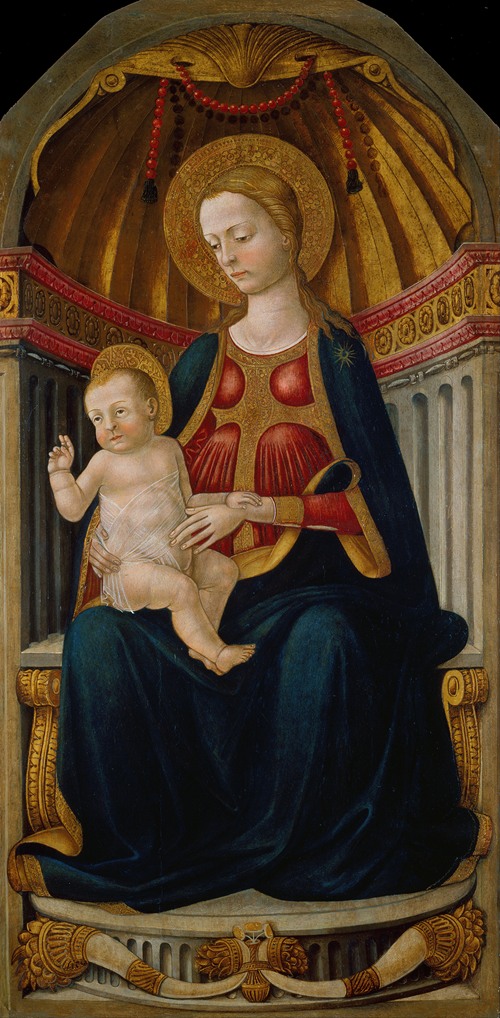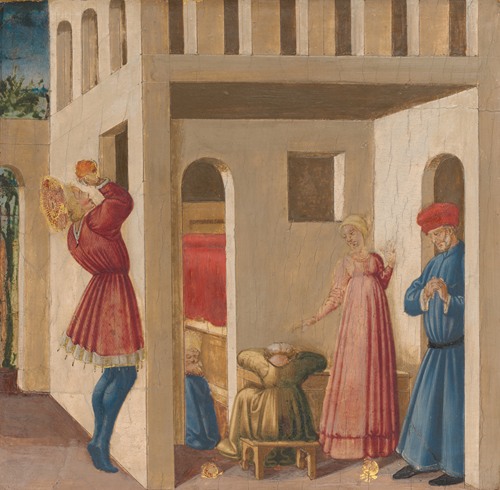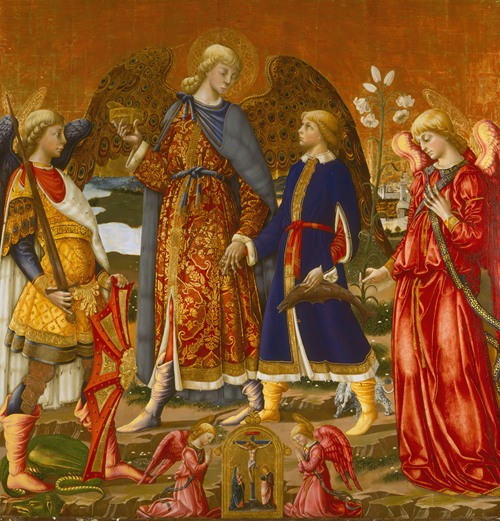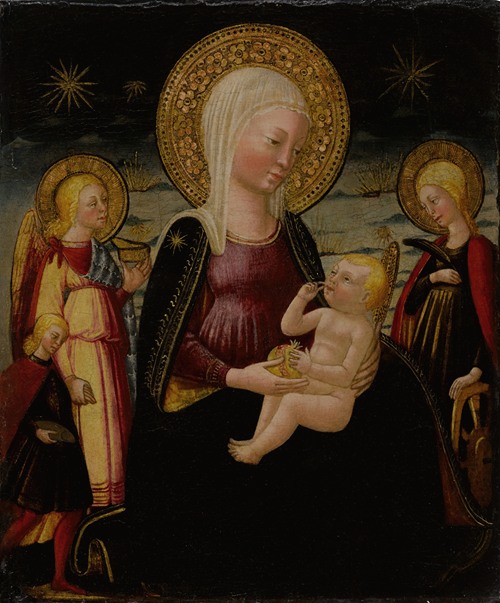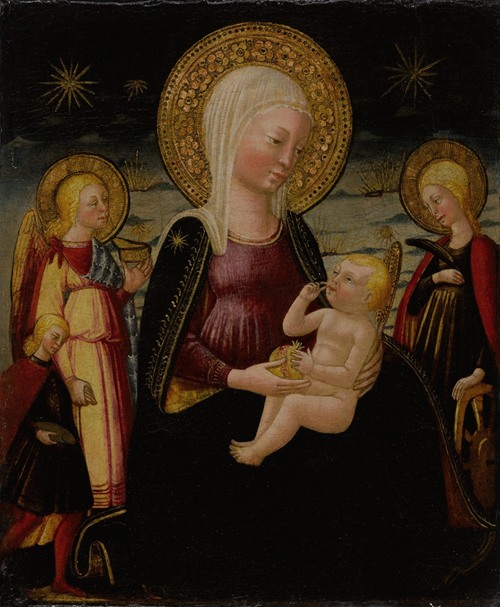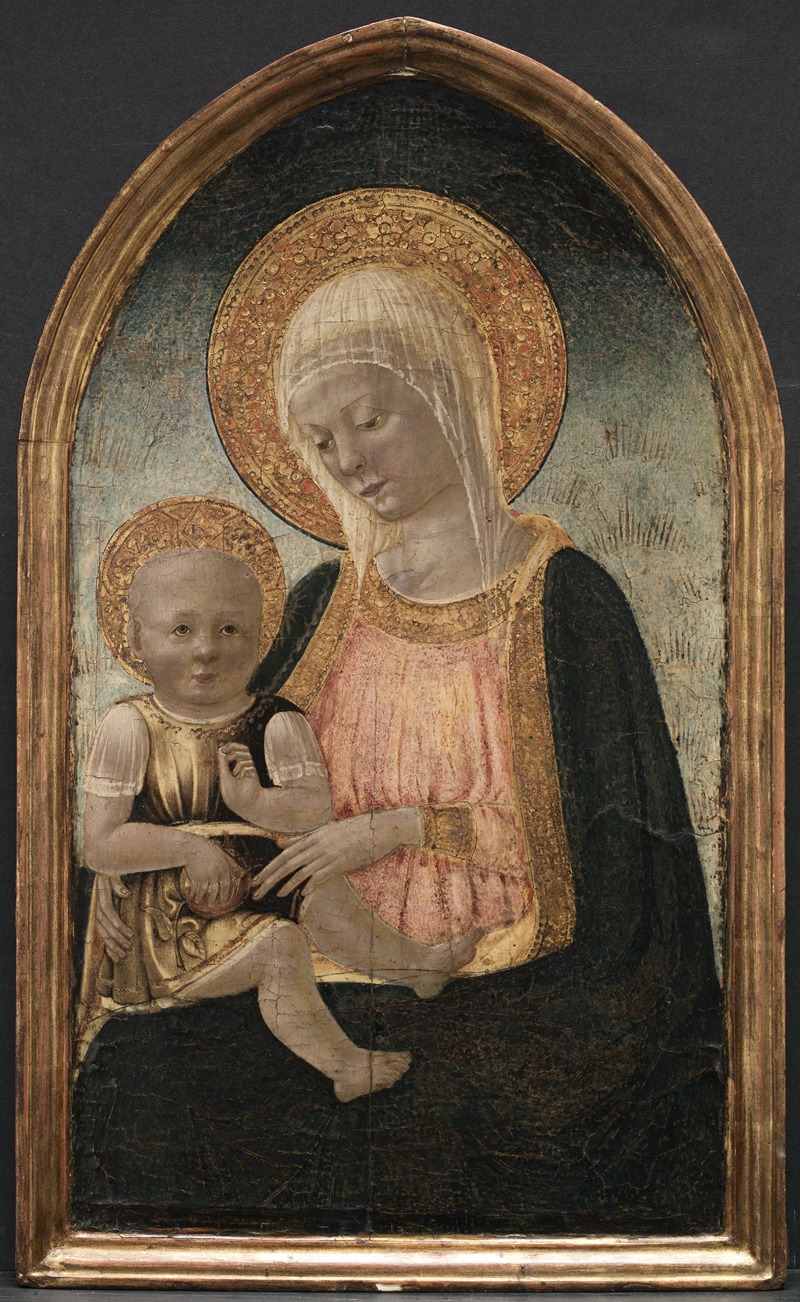
Neri di Bicci was an Italian painter active in his native Florence. A prolific painter of mainly religious themes, he studied under his father, Bicci di Lorenzo, who had in turn studied under his father, Lorenzo di Bicci. The three thus formed a lineage of great painters that began with Neri's grandfather.
Neri di Bicci's main works include a fresco of Saint John Gualbert Enthroned with Ten Saints (1455) for the church of San Pancrazio, Florence (now in the nearby church of Santa Trinita), an Annunciation (1464) for Santa Maria alla Campora (now in the Florentine Academy), two altarpieces (one dated 1452) in the Diocesan Museum of San Miniato, a Coronation of the Virgin (1472) on the high altar of the abbey church at San Pietro a Ruoti (Bucine), and the Madonna with Child with Four Female Saints (1474) on loan to the Sacred Art Museum in Casole d'Elsa from the Pinacoteca Nazionale in Siena.
Neri is most famous for his Ricordanze, a series of journals he kept from 1453 until 1475 in which he chronicled the numerous types of commissions he accepted (altarpieces, small devotional panels, frescoes, shop signs, candlesticks, painted sculpture, etc) and the rates of remuneration for his work, as well as his pupils, collaborators and patrons. The Ricordanze are the most extensive such document from the fifteenth century. They are today preserved in the library of the Uffizi Gallery.
When Neri was born in 1419 he was the third in line of the Bicci family artists. His grandfather Lorenzo di Bicci was a contemporary of Jacopo di Cione and Niccolò di Pietro Gerini, and a prolific painter of altarpieces (Empoli, Collegiata di Sant'Andrea; Florence, Galleria dell'Accademia; Loro Ciuffena, Santa Maria Assunta), frescoes and small-scale devotional panels for domestic interiors (Baltimore, Walters Art Museum; Nashville, Vanderbilt University Fine Arts Gallery; San Francisco, Legion of Honor; Rome, Museo di Palazzo Venezia). Neri's father and teacher Bicci was also an artist who even more prolific than his father. Neri spent much if his youth in Bicci's workshop painting in a very similar style. In 1434, at the age of fifteen, Neri joined the Florentine painters' confraternity the Compagnia di San Luca.
Neri created works for all different social classes, ranging from the upper bourgeoise to Florentine guild members, government offices, prominent local basilicas and humble provincial churches. His first documented work is from 1439, when he collaborated with his father on the trompe-l’oeil funerary monument to Luigi Marsili (1342–94) in Florence Cathedral. In 1440 Neri dated the Annunciation in San Angelo a Legnaia, in which he collaborated with his father.
By 1444 Neri was working more or less independently. An early work from this year is the triptych of the Virgin and Child Enthroned with Ten Saints for the chapel of the Villani family in Santissima Annunziata, Florence. The central panel of this altarpiece is now at the Museum of Fine Arts in Boston, while the side panels are at the Allen Memorial Art Museum of Oberlin College and the Galleria dell'Accademia in Florence. It is clear in this work that Neri's style had evolved and moved away from the style of his father. The composition is perhaps inspired by the work of Fra Filippo Lippi, while the figures show similarities with the art of Paolo Schiavo. In 1447 Neri painted a predella, now lost, for the church of San Martino in Maiano.
Neri's father died in 1452, leaving Neri in charge of the workshop. Also in this year Neri was commissioned to create a fresco cycle illustrating Scenes from the Life of Saint Giovanni Gualberto for the Spini family chapel in Santa Trìnita. The frescoes were specifically commissioned by Giovanni Spini and Salvestro Spini. The only part of this decoration that survives today is the Annunciation over the chapel's entrance arch. The Assumption of the Virgin originally on the altar in this chapel (Ottawa, National Gallery of Canada) shows the clear influence of Fra Angelico and Domenico Veneziano.
